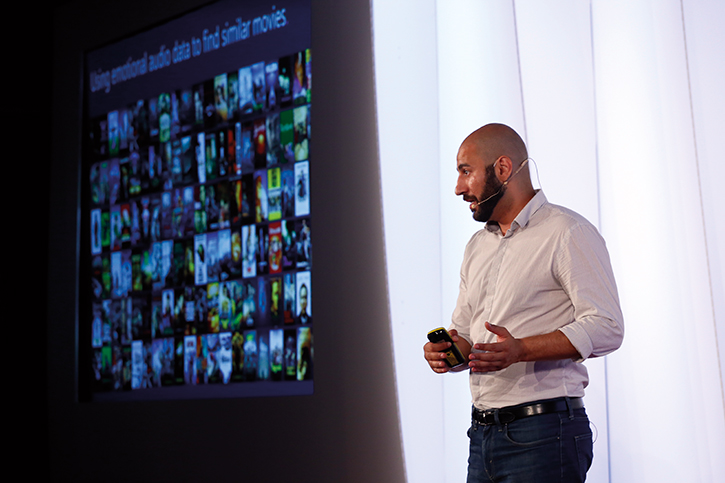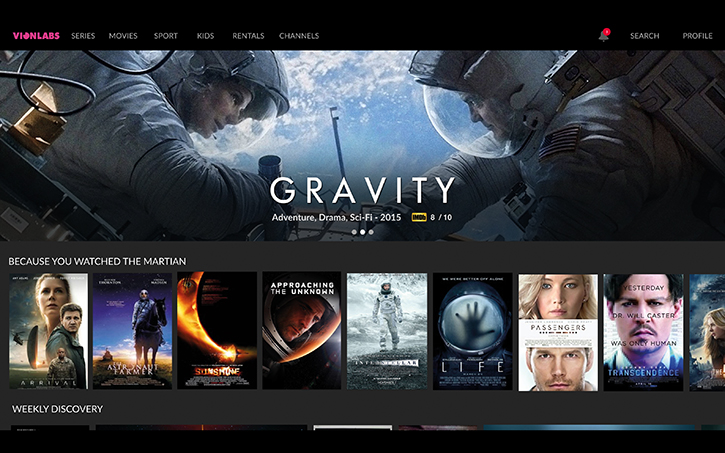Request for Content Discovery

Choosing a content discovery engine for your online video business requires the same personalisation and care that you would want to pass on to your customers.
Words by Arash Pendari, CEO Founder, Vionlabs
When operators want to upgrade their systems they often turn to a process that we know as the RFP (Request For Proposal) process. There are a number of steps and versions: Request for Information, Request for Quote, Request for Purchase, and probably others less known, but they are all very similar in structure.
The process generally consists of the operator sending out a long list of requirements, essentially functionality and user stories that the desired system should meet in order to be viable. The requirements might range from what standards to support to how a specific input or data point should behave within the system and how it will integrate into the current framework.
RFP is a great tool, when there are clear standards and many equal suppliers, and when you are primarily looking for a low price. Say you are a pay TV service looking for a new set-top box to replace your old one. You know pretty much what you want the box to do, the formats it should support and the systems that it needs to integrate with. After some work, you will end up with two to three almost equal suppliers that you can have compete to become the lowest bidder. Job done! Now you will have the best product for the lowest price, or at least pretty close to it.
But there are also many times where the traditional RFP processes will not get you a better deal, especially when subjective evaluation is involved. If you want to build a new marketing campaign, negotiate your channel lineup or create a strong, new asset for your SVOD service, you should probably avoid a traditional RFP process. It’s not the number of actors, the length of the script, or the number of explosions written into it that will determine how successful your content is. I have never heard of someone using an RFP to pick their new hit show. Stories, emotions and scripts are hard, if not impossible, to evaluate based on those types of metrics. The process has to be one in which you look at each individual script or idea and try to determine the value and strategic fit for each specific opportunity.
Looking at the recommendation and video discovery field, this particular problem also surfaces for many operators.

What Shall We Watch Today? When it comes to ‘because you watched’ lists, today’s engines use customer behaviour and emotions to provide the best customer experience possible
Emotions vs Measurements
The discovery process is based on user experience and emotions. Some parts of the process can be measured and optimised, and systems need to adhere to the technical standards of your backend, but the real value between services can only be measured through interaction with consumers.
Using an RFP process when looking for a discovery engine might have been a great choice back when they were essentially analytics and search engines based on a specific rule-set. Such engines produced a list of items according to criteria, like the date ingested into the system, popularity, genres and actors. These systems were basically an automated search engine based on the mindset of your editorial team.
In order to enable more advanced features, such as “Weekly Discovery”, “Because you watched” or even simple personalised sorting and display, something more nuanced is needed. The more advanced, often AI driven, engines of today are more and more based on perception, behaviour and emotions. This provides you with a more accurate set of tools to hyper-personalise a service.
When you are looking to upgrade your video discovery and personalisation, you need to take this into account. If you are looking to innovate and create a service that inspires trust and guides your users through what might be a huge library of assets, you cannot simply choose the lowest bidder. You must select the best possible option for the experience you want to create. So, instead of sticking to a standard RFP process, adapt it, change it. Or perhaps even kill it and try something new.
Discovering Your Discovery
First, you need to ask yourself the key question: How strategically important is the content discovery to you and the customer experience you want to deliver?
If you decide it is an area of critical importance, make room for a number of pilot projects. As long as you have a reasonably flexible back end CMS, you can easily add a cloud-based system to start supplying you with the data you need to complete more advanced use-cases.
If you are buying a new system, make sure it can handle multiple suppliers so you can A/B test the results and quickly shift between suppliers as the tech evolves.
If it’s not critical but still important, take some extra time to define the key performance indicators (KPIs) you care about rather than specific features. In the end, you are looking for results and you will never know exactly how you want to build the system in two, three or five years time. OTT, SVOD and on-demand has not even been around for ten years, so trying to determine in detail today how it will look in three years time is not a great strategy.
Instead, try a pilot or a prototype, choose a specific use-case, build it, deploy it, and if it works keep building additional ones. Updating things in small steps and A/B testing the effects will give you a good way of determining the quality of the service and at the same time a better understanding of the behaviour of your customers.
Perceptions and behaviours are central to the user experience, so make sure you have a KPI set that matches up with behaviour you want to create. For most recommendation engines, measuring two simple things will give you a fast indication of whether you are doing the right thing
or not.
The first is time to content – ie, the time spent from starting the interface to watching something. You want users to spend their time watching, not searching.
The second is additions to “My Watchlist”. A good discovery experience will expose a more relevant selection of content to your users. A longer watchlist will make the customer stay longer and consume more.
In summary, video is art. Its value is in the emotional experience it produces. Your user experience should enable and strengthen that.
This article originally appeared in the December 2018 issue of FEED magazine.









